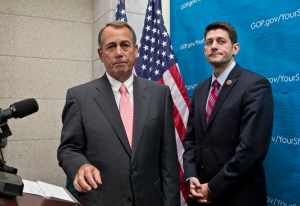 As the company announced a few months ago, CVS went ahead this week and pulled all tobacco products off its shelves — and changed its name to CVS Health in conjunction with this move. However, CVS, the second largest drug store company in the U.S., made the decision more quickly than they announced they would. It was supposed to happen in October, but they went ahead and made the change shortly after Labor Day. CVS is expected to lose up to $2 billion a year in retail sales, but this move is also part of a “rebranding” for the chain to become more of a health care provider, rather than a general drug store with film development, candy, office supplies, etc. So, the company is looking to make up for those losses by making more money on health care services, products, etc. This is according to the New York Times
As the company announced a few months ago, CVS went ahead this week and pulled all tobacco products off its shelves — and changed its name to CVS Health in conjunction with this move. However, CVS, the second largest drug store company in the U.S., made the decision more quickly than they announced they would. It was supposed to happen in October, but they went ahead and made the change shortly after Labor Day. CVS is expected to lose up to $2 billion a year in retail sales, but this move is also part of a “rebranding” for the chain to become more of a health care provider, rather than a general drug store with film development, candy, office supplies, etc. So, the company is looking to make up for those losses by making more money on health care services, products, etc. This is according to the New York Times
The decision to stop selling cigarettes is a strategic move as pharmacies across the country jockey for a piece of the growing health care industry. Rebranding itself as a company focused on health could prove lucrative for the drugstore as it seeks to appeal to medical partners that can help it bridge the gap between customers and their doctors.
Again, from the New York Times:
CVS has entered partnerships with more than 40 health systems, including local hospitals, to help run its clinics. The company opened 32 clinics last quarter and is on track to open at least 150 more this year, Carolyn Castel, a CVS spokeswoman, said. Revenues at the clinics are up 24 percent in the second quarter, compared with a year earlier, and the company plans to operate 1,500 clinics by 2017, CVS said.
As CVS seeks new health partners, its decision to end cigarette sales may make it more appealing than its tobacco-selling rivals.
“Think of it this way: Would you find cigarette machines or retail stores in the gift shops in a hospital selling cigarettes? Of course not,” said Nancy Copperman, the corporate director of public health initiatives for the North Shore-Long Island Jewish Health System, a minute clinic partner. “I think it does give them a leg up.”
Interestingly, according to the Washington Post, CVS Health also will not sell e-cigarettes either.
No electronic cigarette sales, either. CVS doesn’t sell electronic cigarettes, but after making its tobacco announcement in February, Merlo said the company was monitoring Food and Drug Administration action on the products. Still, it sounds like CVS won’t lift its current ban on e-cigarettes. “We don’t carry them today, and we don’t have plans to carry them,” Chief Executive Officer Larry Merlo said on Tuesday.





















